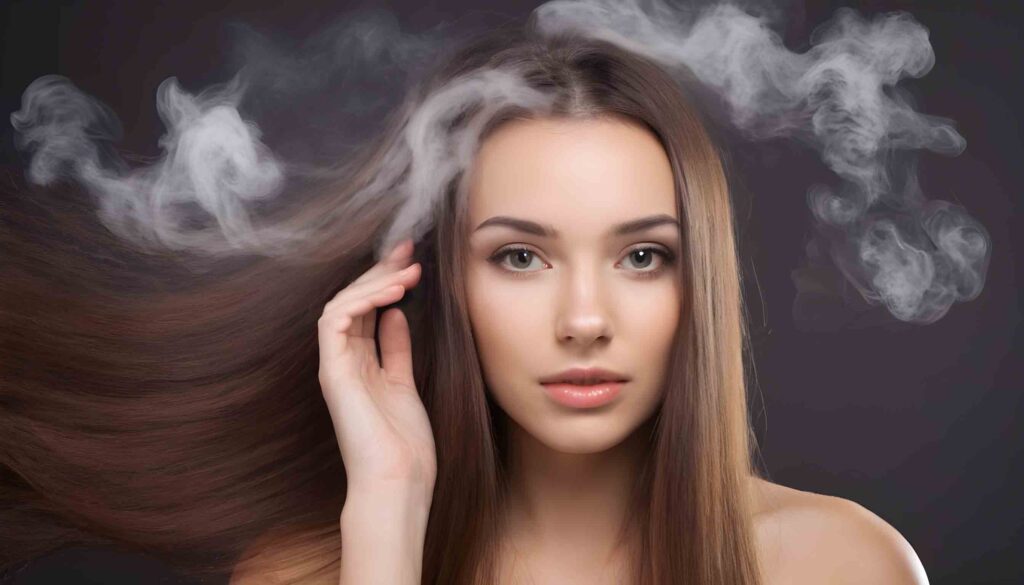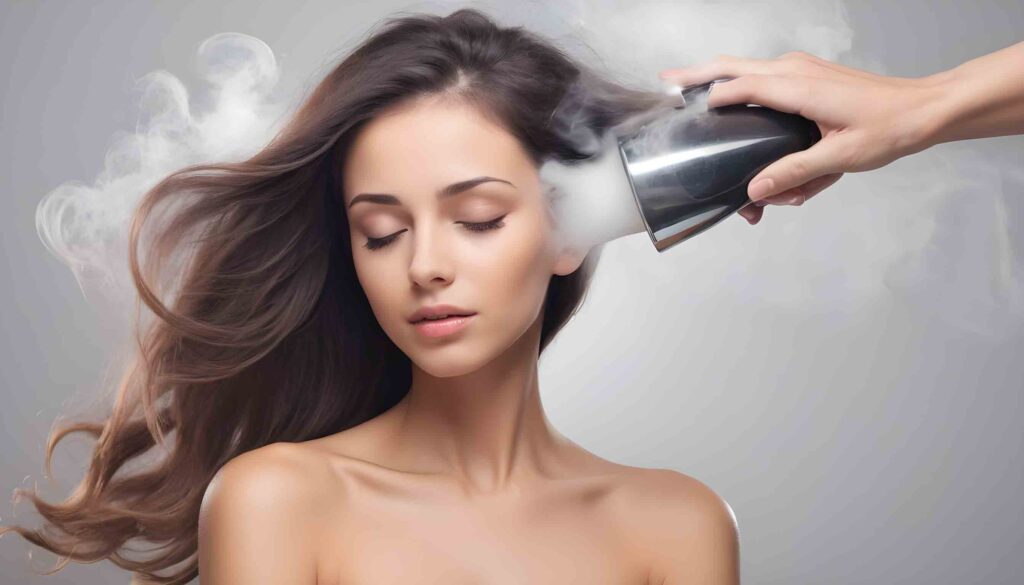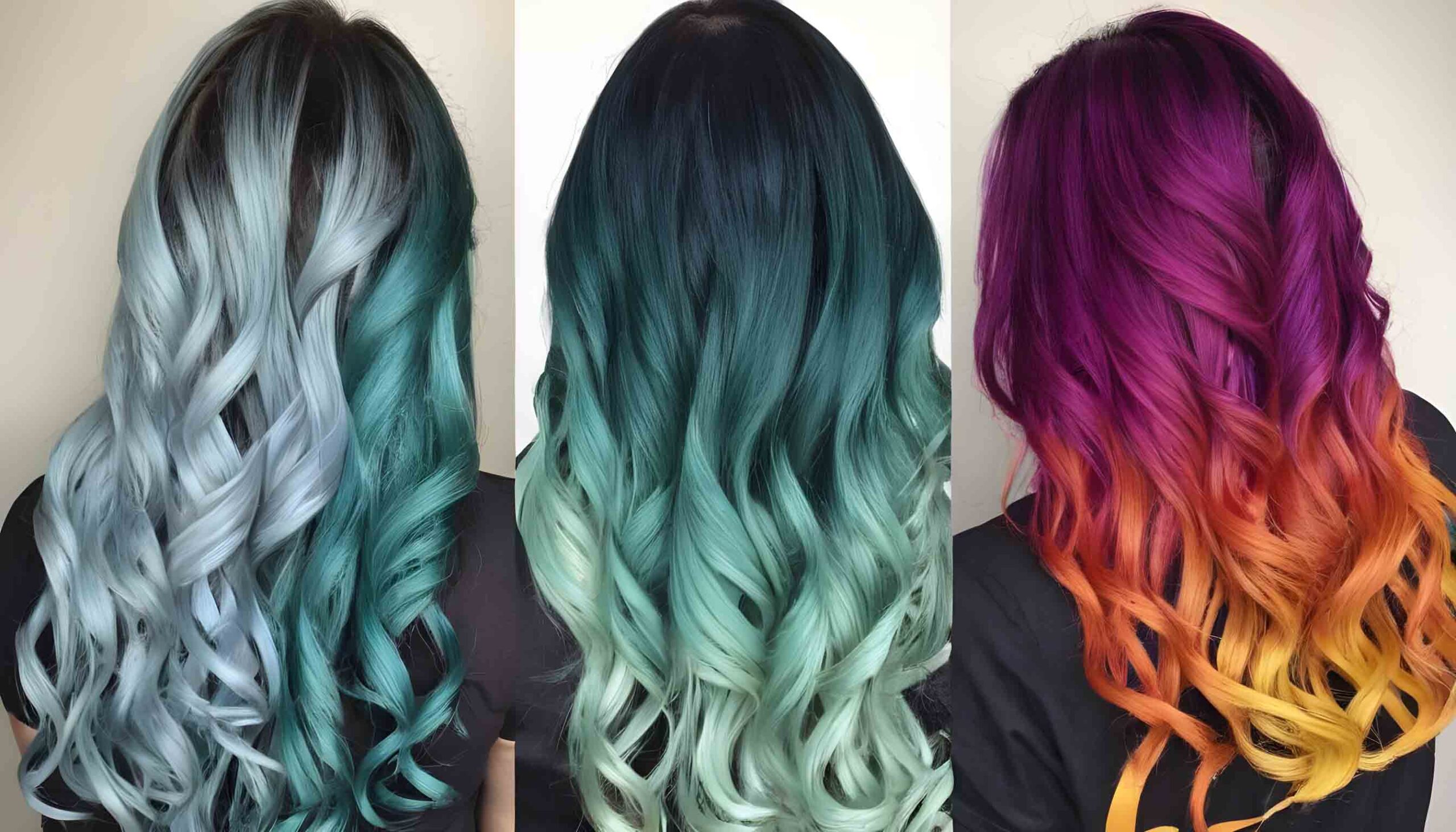Discover the transformative benefits of hair steaming natural hair. This comprehensive guide explores how steaming can revolutionize your natural hair care routine by improving moisture retention, enhancing curl definition, increasing elasticity, promoting scalp health, and encouraging potential hair growth. Unveil the secret to achieving luscious, hydrated, and effortlessly manageable natural hair through the power of steam. Embrace a tailored approach with expert tips and techniques for different hair types and lengths, ensuring optimal results for your unique hair needs. Unlock the full potential of your natural crown with hair steaming.
Introduction: Unveiling the Power of Hair Steaming for Natural Hair
In the world of natural hair care, the quest for hydration, manageability, and overall hair health is an ongoing journey. For those embracing the beauty of their natural tresses, finding effective techniques to nurture and revitalize their locks is a top priority. Enter hair steaming, a transformative method that has gained widespread popularity among the natural hair community. This ancient practice has proven to be a game-changer, offering a multitude of benefits that can revolutionize your hair care routine.
What is Hair Steaming? Understanding the Technique and Its Applications
Hair steaming is a natural hair care technique that involves exposing your hair to warm, moist steam. This process can be achieved through various methods, including specialized hair steamers, DIY setups, or even steaming during a relaxing shower. The warm, moist steam helps to open up the hair cuticles, allowing deep conditioning treatments and moisturizing products to penetrate deeper into the hair shaft, resulting in enhanced hydration, nourishment, and overall hair health.
Unlocking Moisture: How Steaming Benefits Natural Hair‘s Hydration
One of the primary benefits of hair steaming for natural hair is its ability to unlock optimal moisture levels. Natural hair, with its unique texture and structure, is often prone to dryness and dehydration, which can lead to breakage, frizz, and overall lack of manageability. By opening up the hair cuticles, steaming allows deep conditioning treatments and moisturizing products to penetrate deeper into the hair shaft, effectively quenching thirsty strands and restoring much-needed hydration.
Taming Frizz and Boosting Shine: Steaming’s Impact on Manageability and Texture
Well-hydrated natural hair is not only healthier but also more manageable and visually appealing. Hair steaming can help tame frizz and enhance curl definition by allowing the hair to better absorb and retain moisture. As a result, natural hair appears smoother, shinier, and more defined, making it easier to style and maintain your desired look. Say goodbye to unruly strands and embrace the sleek, radiant tresses you’ve always wanted.
Deeper Penetration, Enhanced Results: Steam’s Role in Deep Conditioning
Deep conditioning is a crucial step in any natural hair care routine, and hair steaming can take this process to new heights. By allowing deep conditioning treatments to penetrate deeper into the hair shaft, steaming amplifies the benefits of these nourishing products. This means that the hair can better absorb and utilize the beneficial ingredients, such as oils, butter, and proteins, leading to more profound conditioning, repair, and overall hair health.
Strengthening Strands: Does Steaming Help Reduce Breakage in Natural Hair?
One of the most significant concerns for natural hair enthusiasts is breakage, which can lead to thinning, split ends, and overall hair damage. Fortunately, hair steaming can play a crucial role in strengthening strands and reducing breakage. By improving moisture levels and enhancing product absorption, steaming helps to increase hair elasticity, making it more resilient and less prone to breakage during styling, detangling, and everyday wear.
Scalp Health Matters: How Steaming Can Promote a Healthy Scalp Environment
A healthy scalp is the foundation for healthy hair growth and overall hair vitality. Hair steaming can contribute to scalp health by opening up the pores and allowing for better absorption of nourishing ingredients. This can promote a balanced scalp environment, improve blood circulation, and potentially alleviate issues like dryness, flakiness, or buildup, all of which can impede hair growth and overall scalp health.
Boosting Growth Potential: Can Steaming Encourage Hair Growth for Natural Hair?
While hair steaming itself does not directly stimulate hair growth, it can indirectly support growth by promoting a healthy scalp environment and improving overall hair health. By nourishing the scalp and hair follicles, steaming can create an optimal environment for potential hair growth. Additionally, reducing breakage and promoting stronger, more resilient strands can contribute to longer, thicker-looking hair over time.
Unveiling the Versatility: Steaming Applications Beyond Deep Conditioning
While hair steaming is often associated with deep conditioning, its versatility extends far beyond this application. Steaming can be incorporated into various hair care routines and treatments, such as hot oil treatments, protein treatments, or even henna applications. By opening up the hair cuticles, steaming can enhance the absorption and effectiveness of these treatments, allowing for customized hair care tailored to your specific needs.
DIY vs. Salon Steaming: Exploring Different Approaches for Natural Hair
When it comes to hair steaming, there are two primary approaches: DIY steaming at home or professional steaming services at a salon. Both methods have their advantages and considerations. DIY steaming allows for convenience and cost-effectiveness, while salon steaming provides a more immersive and professional experience. Factors such as budget, accessibility, and personal preferences will play a role in determining which approach is best suited for your natural hair care routine.
Unlock the Incredible Benefits of Hair Steaming: A Game-Changer for Healthy, Hydrated Locks 2024

Discover the transformative power of hair steaming, a revolutionary technique that offers unparalleled benefits for achieving healthy, hydrated, and manageable hair. Explore how this natural method can improve moisture retention, enhance product absorption, increase elasticity, nourish the scalp, and promote overall hair health. Learn about the advantages of steaming for various hair types, including curly, coily, and natural textures. Unlock the secret to revitalizing your tresses and embracing your hair’s true radiance through the incredible benefits of hair steaming.
what are the benefits of hair steaming Hair Info

Hair steaming offers numerous benefits for overall hair health and manageability, including:
- Improved moisture retention: The warm steam helps to open up the hair cuticles, allowing deep conditioning treatments to penetrate deeper into the hair shaft, resulting in better hydration and moisture retention.
- Enhanced product absorption: The steam helps your hair to better absorb and utilize the beneficial ingredients in hair care products, such as oils, butters, and proteins.
- Increased elasticity: Proper hydration and conditioning can improve hair elasticity, reducing breakage and promoting stronger, more resilient strands.
- Scalp nourishment: The steam can help to open up the pores on the scalp, allowing for better absorption of nutrients and promoting a healthy scalp environment.
- Manageability and detangling: Well-hydrated hair is easier to detangle and style, reducing the risk of breakage and making it more manageable.
- Hair growth support: A healthy scalp and well-nourished hair follicles can potentially stimulate hair growth and promote overall hair health.
Essential Oils and Steam: Exploring the Synergy for Enhanced Benefits
Essential oils have long been revered for their nourishing and therapeutic properties, and when combined with hair steaming, they can offer an added boost to your hair care regimen. The warm steam can enhance the absorption and efficacy of essential oils, allowing their beneficial compounds to penetrate deeper into the hair and scalp. This synergistic combination can amplify the benefits of both steaming and essential oils, leading to even more profound results for your natural tresses.
Frequency and Duration: Establishing a Steaming Routine for Natural Hair
To reap the maximum benefits of hair steaming, it’s essential to establish a consistent routine tailored to your specific hair needs. The frequency and duration of steaming sessions can vary depending on factors such as hair porosity, density, and overall condition. Generally, most experts recommend steaming natural hair every 1-4 weeks, with low-porosity hair types potentially benefiting from more frequent steaming. However, it’s crucial to listen to your hair and adjust the frequency and duration accordingly to avoid over-steaming or moisture overload.
Safety First: Precautions and Considerations for Steaming Natural Hair
While hair steaming is generally considered safe, it’s essential to exercise caution and follow proper techniques to avoid potential risks or damage. Excessive heat or prolonged steaming can lead to moisture overload, weakening of hair strands, and potential scalp irritation. It’s crucial to monitor your hair’s condition during the steaming process and adjust accordingly. Additionally, it’s essential to follow the manufacturer’s instructions when using hair steamers and to take necessary safety measures to prevent burns or scalding.
Beyond the Steam: Complementary Hair Care Practices for Optimal Results
While hair steaming can work wonders for natural hair, it’s important to recognize that it is part of a comprehensive hair care routine. To achieve and maintain optimal hair health, it’s essential to complement steaming with other beneficial practices, such as regular deep conditioning, protein treatments, protective styling, and a balanced diet rich in hair-nourishing nutrients. By combining hair steaming with these complementary practices, you can create a synergistic approach that nurtures and supports your natural tresses from the inside out.
Natural Hair Types and Steaming: Tailoring the Technique for Individual Needs
Natural hair encompasses a wide range of textures, densities, and porosities, each with its unique set of needs and considerations. While hair steaming can benefit all natural hair types, the specific techniques, frequency, and duration may need to be tailored to accommodate individual hair characteristics. For instance, low-porosity hair may require longer steaming sessions to ensure optimal moisture absorption, while high-porosity hair may benefit from shorter durations to prevent over-hydration. Understanding your hair’s unique needs is crucial for maximizing the benefits of hair steaming.
Debunking Myths: Addressing Common Misconceptions about Hair Steaming
As with any popular hair care technique, hair steaming has its fair share of myths and misconceptions that can often lead to confusion or hesitation. From concerns about excessive moisture leading to hygral fatigue to fears of hair thinning or scalp irritation, it’s essential to separate fact from fiction. By addressing these common misconceptions and providing science-based information, we can empower individuals to make informed decisions about incorporating hair steaming into their natural hair care routines.
The Science Behind the Steam: Understanding the Mechanisms at Play
While the benefits of hair steaming are undeniable, it’s also important to understand the scientific principles at work behind this technique. By delving into the mechanisms that govern hair structure, porosity, and moisture absorption, we can gain a deeper appreciation for how steaming interacts with our natural tresses. This knowledge not only enhances our understanding of the process but also equips us with the tools to optimize our steaming routines for maximum efficacy.
Sustainability in Focus: Eco-Friendly Steaming Techniques for Natural Hair
In today’s environmentally conscious world, it’s essential to consider the sustainability aspect of our hair care routines. Hair steaming offers an opportunity to embrace eco-friendly practices by exploring DIY methods, repurposing household items, and minimizing waste. From utilizing reusable steamer caps to incorporating natural ingredients in deep conditioning treatments, there are numerous ways to incorporate sustainability into your steaming routine, ensuring that your natural hair care journey is not only beneficial for your tresses but also for the planet.
The Verdict: Is Hair Steaming Worthwhile for Natural Hair?
As we delve deeper into the world of hair steaming for natural hair, one question remains: is it truly worthwhile? By weighing the numerous benefits, addressing concerns, and exploring the versatility of this technique, we can confidently conclude that hair steaming is indeed a game-changer for those on the natural hair journey. From unlocking optimal hydration and manageability to supporting scalp health and potential hair growth, steaming offers a multifaceted approach to nurturing and revitalizing natural tresses. Whether you choose to embrace DIY steaming or indulge in professional salon services, incorporating this ancient practice into your hair care routine can transform your natural locks, revealing their true radiance and glory.
Frequently Asked Questions Benefits Of Hair Steaming Natural Hair:
Is hair steaming good for natural hair?
Yes, hair steaming is generally considered highly beneficial for natural hair types, especially those with curly, coily, or tightly textured hair strands that are prone to dryness and breakage. Natural hair often requires extra care and hydration to maintain its health and manageability, and hair steaming can be an effective solution to provide deep moisture, enhance curl definition, increase elasticity, promote scalp health, and improve overall manageability.
How often should I steam my natural hair?
The frequency of hair steaming for natural hair depends on several factors, including your hair’s porosity, density, and overall condition. Generally, most experts recommend steaming natural hair every 1-4 weeks, with low-porosity hair types potentially benefiting from more frequent steaming, and high-porosity hair types requiring less frequent steaming. It’s important to listen to your hair and adjust the frequency accordingly to avoid over-steaming or moisture overload.
Does steaming help with hair growth for natural hair?
While hair steaming itself does not directly stimulate hair growth, it can indirectly support growth by promoting a healthy scalp environment and improving overall hair health. By nourishing the scalp and hair follicles, steaming can create an optimal environment for potential hair growth. Additionally, reducing breakage and promoting stronger, more resilient strands can contribute to longer, thicker-looking hair over time.
Can I steam my natural hair at home?
Yes, you can absolutely steam your natural hair at home using various methods and setups. Options include DIY steamer caps or towels, handheld steamers, facial steamers, or even shower steaming. While these DIY methods may not be as powerful or convenient as professional hair steamers, they can still provide beneficial steaming for natural hair when done correctly and with proper safety precautions.
What are the benefits of steaming for natural hair?
Hair steaming offers numerous benefits for natural hair, including improved moisture retention, enhanced curl definition, increased elasticity, scalp nourishment, improved manageability, deeper product penetration, potential hair growth support, and overall healthier, more vibrant tresses. Steaming can help tame frizz, boost shine, reduce breakage, and promote a healthy scalp environment, making it an invaluable addition to any natural hair care routine.
Is it safe to steam natural hair?
Hair steaming is generally considered safe for natural hair when done correctly and with proper precautions. However, it’s essential to exercise caution and follow proper techniques to avoid potential risks or damage. Excessive heat or prolonged steaming can lead to moisture overload, weakening of hair strands, and potential scalp irritation. It’s crucial to monitor your hair’s condition during the steaming process and adjust accordingly, as well as follow the manufacturer’s instructions when using hair steamers.
How long should I steam my natural hair?
The recommended duration for steaming natural hair varies depending on your hair type, porosity, and the desired level of hydration. Generally, most experts suggest steaming for 15-30 minutes, with low-porosity hair types potentially requiring longer steaming times, and high-porosity hair types benefiting from shorter durations. It’s important to start with shorter steaming sessions and gradually increase the time as needed while monitoring your hair’s condition to avoid moisture overload.
Can steaming damage natural hair?
Steaming can potentially damage natural hair if not done correctly or in moderation. Excessive steaming, particularly with very hot steam, can cause moisture overload, leading to swelling and weakening of the hair strands. Additionally, prolonged exposure to steam can strip the hair of its natural oils, leaving it dry and brittle. To avoid damage, it’s essential to follow proper steaming techniques, use appropriate temperatures, and ensure your hair is adequately conditioned before and after the process.
Do I need to deep condition after steaming my natural hair?
Yes, it is highly recommended to deep condition your natural hair after steaming. The steam helps to open up the hair cuticles, allowing deep conditioning treatments to penetrate deeper into the hair shaft. Applying a deep conditioner or hair mask after steaming can help replenish moisture, nourish the hair, and seal in the benefits of the steaming process. Skipping the deep conditioning step may result in moisture loss and potential damage, undoing the benefits of steaming.
Can I use essential oils during hair steaming for natural hair?
Yes, incorporating essential oils during hair steaming can be beneficial for natural hair. The warm steam can enhance the absorption and efficacy of essential oils, allowing their beneficial compounds to penetrate deeper into the hair and scalp. This synergistic combination can amplify the benefits of both steaming and essential oils, offering added nourishment, scalp stimulation, and potential therapeutic benefits. However, it’s important to use high-quality, diluted essential oils and follow proper safety guidelines to avoid any potential irritation or adverse reactions.
Celebrity Endorsements: Natural Hair Icons Embrace Steaming
As hair steaming continues to gain popularity in the natural hair community, it has also garnered the attention and endorsement of several high-profile celebrities and natural hair icons. From award-winning actresses to influential bloggers and vloggers, these influential figures have openly shared their love for hair steaming and its transformative effects on their natural tresses.
One notable advocate is Tracee Ellis Ross, the Emmy-nominated actress known for her role in the hit series “Black-ish.” Ross has been vocal about her natural hair journey and has credited hair steaming as one of her go-to techniques for maintaining her luscious curls and coils. Through her social media platforms and interviews, she has inspired countless natural hair enthusiasts to incorporate steaming into their routines.
Another celebrity steaming enthusiast is Lupita Nyong’o, the Academy Award-winning actress celebrated for her stunning natural hairstyles on the red carpet. Nyong’o has shared her love for hair steaming, praising its ability to enhance moisture retention and improve manageability, allowing her to showcase her natural tresses in all their glory.
Beyond the Hollywood scene, natural hair bloggers and vloggers have played a crucial role in popularizing hair steaming and educating their followers on its benefits. Influencers like Naptural85, CurlyPenny, and NaturallyTemi have dedicated videos and blog posts to sharing their steaming routines, product recommendations, and personal experiences, inspiring countless individuals to embrace this technique.
With these high-profile endorsements and the growing influence of natural hair influencers, hair steaming has gained mainstream recognition and acceptance, solidifying its place as a valuable tool in the natural hair care arsenal.
Steaming for Different Hair Lengths: Adapting the Technique
While hair steaming can benefit natural hair of all lengths, it’s important to recognize that different lengths may require slightly different approaches to maximize the benefits and ensure optimal results. Here’s a closer look at how you can adapt your steaming technique based on your hair length:
- Short natural hair: For those with shorter natural hair lengths, such as tapered cuts, TWAs (Teeny Weeny Afros), or cropped styles, steaming can be an excellent way to infuse moisture and promote manageability. Handheld steamers or DIY steamer caps may be more suitable for targeting the shorter strands effectively.
- Shoulder-length natural hair: Shoulder-length natural hair can benefit from a combination of steaming techniques. Hooded steamers can provide full coverage, while handheld steamers can be used to focus on specific areas or sections that may require extra attention.
- Long natural hair: For those with longer natural hair lengths, hooded steamers or large steamer caps are often the preferred choice. These allow for ample room to accommodate the longer strands and ensure even distribution of steam throughout the entire hair length.
Regardless of your hair length, it’s essential to section your hair properly before steaming to ensure optimal penetration and coverage. Additionally, adjusting the steaming duration and following up with appropriate deep conditioning treatments can help maximize the benefits for your specific hair length and needs.
Steaming for Different Hair Types: Customizing the Experience
Just as natural hair comes in a variety of lengths, it also encompasses a diverse range of textures and types. To truly harness the power of hair steaming, it’s important to tailor the experience to your specific hair type. Here’s a closer look at how you can customize your steaming routine based on your hair’s unique characteristics:
- Coily hair: For those with tightly coiled hair textures, steaming can be particularly beneficial in enhancing moisture retention and improving manageability. Longer steaming sessions, combined with deeply nourishing treatments, can help hydrate and define each coil, reducing frizz and enhancing overall curl definition.
- Kinky hair: Kinky hair types often require extra hydration and care to maintain their health and resilience. Steaming can be an effective way to infuse moisture into the tightly coiled strands, reducing breakage and promoting increased elasticity. It’s important to use steaming in conjunction with protein treatments to strengthen and fortify the hair.
- Curly hair: Curly hair can greatly benefit from the curl-enhancing and frizz-taming effects of hair steaming. By allowing the hair to better absorb and retain moisture, steaming can help define and accentuate each curl, resulting in bouncy, luscious curls with improved manageability.
- Wavy hair: While wavy hair may not require as much intensive hydration as other textures, steaming can still be beneficial in enhancing shine, reducing frizz, and promoting overall hair health. Shorter steaming sessions, paired with lightweight conditioning treatments, can help maintain the hair’s natural wave pattern without weighing it down.
By understanding your hair’s unique characteristics and tailoring your steaming routine accordingly, you can unlock the full potential of this technique and achieve optimal results for your specific hair type.
Incorporating Steaming into Protective Styling Routines
For many natural hair enthusiasts, protective styling is a crucial part of their hair care regimen, helping to minimize breakage, retain moisture, and promote overall hair health. Hair steaming can be a valuable addition to protective styling routines, providing a boost of hydration and nourishment to the hair and scalp before and during protective styles.
One effective way to incorporate steaming is by performing a deep conditioning and steaming session before installing a protective style, such as box braids, crochet braids, or wigs. This allows the hair to be fully hydrated and nourished, ensuring that the protective style starts with a strong foundation of healthy, moisturized strands.
Additionally, steaming can be used during protective styling maintenance sessions. For example, when refreshing or re-tightening braids or twists, a brief steaming session can help revive the hair, infusing it with moisture and allowing for better absorption of any refreshing products or treatments.
For those wearing wigs or sew-in protective styles, steaming can be an excellent way to care for the natural hair underneath. By carefully lifting the protective style and directing the steam towards the scalp and hair, you can ensure that your natural tresses remain hydrated and nourished, even while tucked away.
It’s important to note that when steaming during protective styling, it’s crucial to take extra precautions to avoid disturbing or compromising the integrity of the style. Proper sectioning, gentle handling, and following the recommended steaming times and techniques are essential to ensure the longevity and effectiveness of your protective style.
By incorporating hair steaming into your protective styling routine, you can enjoy the benefits of hydration, nourishment, and overall hair health, while also maximizing the protective qualities of your chosen style.
These additional sections provide further insights and practical tips for incorporating hair steaming into different aspects of natural hair care, catering to various hair lengths, types, and styling preferences. By offering a comprehensive and tailored approach, this article aims to empower readers to embrace hair steaming as a transformative tool in their natural hair journey.
Conclusion
In the ever-evolving world of natural hair care, hair steaming has emerged as a powerful and versatile technique that can revolutionize the way we nurture and care for our tresses. By harnessing the power of warm, moist steam, this ancient practice offers a multitude of benefits that cater to the unique needs of natural hair. From unlocking optimal hydration and improving moisture retention to enhancing curl definition and increasing elasticity, hair steaming has proven itself to be a game-changer for those seeking healthier, more manageable locks. The deeply penetrating effects of steaming allow for improved absorption of nourishing treatments, ensuring that our natural tresses receive the full benefits of the products we lovingly apply. Moreover,
hair steaming extends its benefits beyond mere conditioning, promoting a healthy scalp environment, supporting potential hair growth, and unveiling a newfound radiance and shine. By tailoring the steaming techniques to individual hair types and needs, we can unlock a world of possibilities, embracing the beauty and versatility of our natural tresses.
Whether you choose to indulge in professional salon steaming services or embark on a DIY journey, incorporating hair steaming into your hair care routine is a step towards embracing self-care and prioritizing the health and vitality of your natural locks. So, let us embrace the power of hair steaming, and embark on a transformative journey towards revitalized, hydrated, and truly radiant natural hair. Unlock the full potential of your tresses and bask in the glory of your crowning glory, one steam session at a time.




